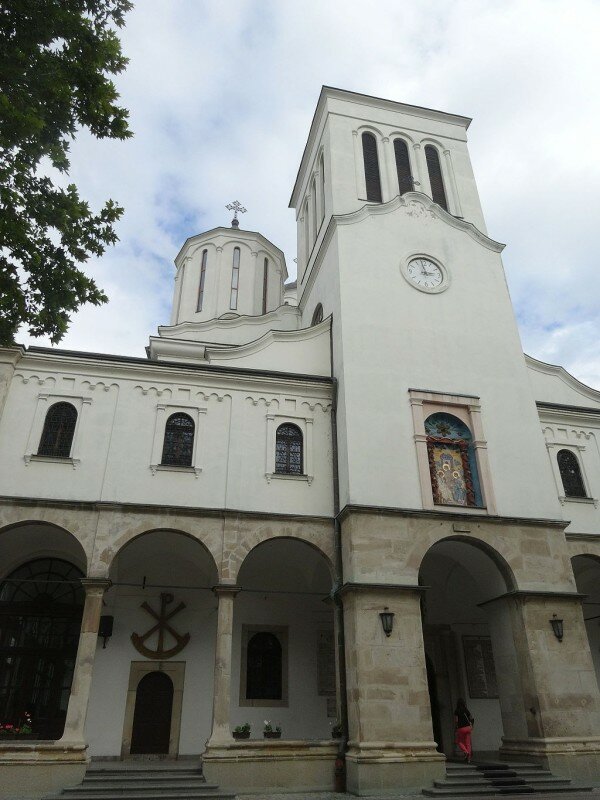Nis is a city where old meets the new, East meets West. With great historical heritage, it is a city you need to visit! Here is our suggestion of places to visit in Nis!
Day 1:
Nis Fortress
The first stop of your visit to Nis should be the fortress of Nis (Niska tvrdjava). The fortress stands on the right bank of the river Nisava on the ground of great historical significance. The first fortress on this territory was built back in the Roman times in II century. It was called Naisus and within its walls was an entire city with its own army and administration. After that, the medieval fortress was built on the Roman and Byzantine ruins. The city of Nis was a city of Roman emperors and Octagon palace that remains behind the walls of the fortress is thought to be the birth place of Constantine the Great. The fortress that we see today was built in XVIII century by the Osman empire out of massive stone walls with four gates and a dug out trench filled with water. From the original fort, two gates remained- Stambol and West Belgrade gate, with the symbolic trench as well. Within the fortress walls, you can get the feeling of walking through history with the remains Roman terms and forum from the time of Naisus, parts of the streets from Byzantine era from V century and the Bali-Belova mosque, which was the first mosque in Nis built in the early XVI century. Also, the Archaeological hall is well worth the visit!
 Christogram Monument
Christogram Monument
After the fortress of Nis, walk over the bridge on Nisava river to the other side. Right next to the bridge is a monument dedicated to Constantine. The monument tells a tale of the battle of Constantine in Rome in the year 312. According to the story, Constantine looked up to the sky and saw the ‘Christogram’ with the message in Latin ‘In hoc signo vinces’ that means ‘In this sign, you will win’. The monument is dedicated to Constantine looking up to the sky with the design of the sign and his image.
Monument to the Liberators of Nis
On one of the main squares in Nis, square of King Milan, there is a monument to the Liberators of Nis. The monument commemorates the crucial years of history of Nis, battles to liberate the city from the Osman empire and the liberation in the World War I, as well. It was created by the sculptor Anton Augustincic out of black marble. The main part of the sculpture is the horseman holding the flag of victory and in the bottom, there are soldiers with important historical dates.
Skull Tower
The visit to the Skull tower is a unique experience! Skull tower was built as a scary reminder of an Osman revenge for the battle on Cegar against Serbian people. The Serbian soldiers lost the battle on Cegar and Osmans won this important military position with many of the Turkish soldiers killed as well. They decided to build a tower out of skulls of Serbian soldiers that was 4.5 m high and 4 m long and wide. The tower deteriorated over time and only a part of it remains with 58 skulls. Later in 1938. a chapel was built to keep the tower from further damage.
Church of Holy Trinity
Walk from the Skull tower to the beautiful Orthodox church in the center. Saborni hram (Church of Holy Trinity) is a unique architectural gem. It is a combination of different styles combined with elements of baroque, Renesanse and Islam built in the XIV century. The church is even more stunning from the inside with detailed ikonostas.
Perfect end to the first day is in one of the oldest parts of town. Kazandzijsko sokace is the only part of Nis where you can get a feeling of the times that have passed. Cobblestone streets tell the story of the famous craftsman’s part of the town from the Osman period in XIX century. Now, this is a great area for having a lunch break to enjoy in some of the tastiest traditional dishes.
Monument of Stevan Sremac
In the Kazandzijsko sokace, there is an interesting monument dedicated to a famous Serbian writer Stevan Sremac. Stevan Sremac is realist writer known for his novels about life and characters in Serbia that left a mark in Serbian literature. This bronze sculpture presents the writer, his dog and the main character, Kalca, of one of his books Ivkova slava seating around the table.
Day 2.:
Bubanj Memorial Park
Start off your day in the Bubanj Memorial park. Bubanj Memorial park is a memorial complex dedicated to victims of World War II in Nis and south Serbia. The area of the Bubanj memorial park was a place of mass shootings from 1942 to 1944. The design of the monument represents the fists of strength and fight of a man, women, and child against the fascist occupation. The first commemoration of the historical importance of this place was in 1945 and in 1963 the memorial park was created in the way how it looks now. The monumental sculptures are by the artist Ivan Sabolic and its historic and architectural importance was recognized in 1979 by declaring it a monument of exceptional significance. Now, the park is also a great place to escape the busy city of Nis and relax.
Mediana
Mediana is an archaeological site 5 km outside of Nis. It is a complex built in the period of Constantine the Great in the beginning of IV century. By examining the ruins, the archaeologists came to the conclusion that there were three building periods of the complex as it was a residence of Constantine and his two sons. The Central place of the residence is the luxurious villa with the peristilom unique on the Balkan. The testament of the role and influence of Christianity are the two remarkable mosaics in early Christian churches with the monogram of Jesus Christ.
Monument of Cegar
Finish your visit with the look into history on the Cegar hill. Cegar is a hill near Nis where a famous battle in 1809 against the Ottoman empire took place. The monument on Cegar was built in memory to the fallen soldiers and their commander Stevan Sindjevic. The monument is shaped like a military fort with the elements of romanticism. It was installed on June 1 of 1927, 50 years after the liberation of Nis and it is recognized as a monument of extraordinary significance.
Updated: August 23, 2017















